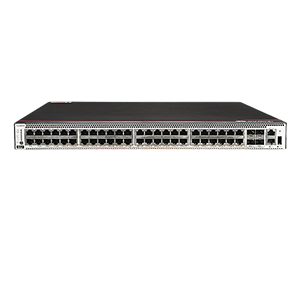Fiber splitters play an important role in fiber optic communication networks. This article will focus on how to choose the right fiber splitter. We will first define the structure and working principle of fiber splitters, and introduce the characteristics and application scenarios of different types of fiber splitters. Next, we will analyze the key factors that affect the selection of fiber splitters, including splitting ratio, optical loss, fiber type, operating wavelength, and external dimensions.
We will explain how to select a matching fiber splitter based on these parameters to achieve optimal performance. Subsequently, we will provide specific fiber splitter selection cases and processes to help you evaluate and select the best splitter based on actual needs. Finally, we will introduce the correct installation steps and daily maintenance methods of fiber splitters.
Basic concept of fiber splitter
Let me introduce you to the basic concept of fiber splitter:
Structure and working principle of fiber splitter:
Fiber splitter is a passive optical device that can distribute optical signals to multiple output ends, mainly composed of the following parts:
- Input fiber – input the optical signal to be distributed into the splitter
- Branch area – realize the distribution of optical power through optical coupling
- Output fiber – Output the distributed optical signal to each port
The working principle of the fiber optic splitter is based on the principle of optical coupling and splitting:
- In the splitting area, the input light is distributed to each output optical fiber through coupling
- The splitting ratio is determined by the optical design of the splitting area, usually 1:N
- The output power is equally divided or different distribution ratios are designed according to actual needs
Characteristics and applications of common fiber optic splitters:
(1) 1xN splitter
- Distribute 1 input light to N output ports
- Applied to signal distribution and monitoring of optical networks
(2) 2xN splitter
- With 2 inputs and N outputs
- Applied to signal switching and reorganization in optical communication systems
(3) Ring splitter
- Realizes cyclic distribution of optical signals within the loop
- Applied in fiber optic sensing, optical switching and other fields
(4) Wavelength division splitter
- Separates input signals according to optical wavelength
- Applied to channel allocation in wavelength division multiplexing optical networks
(5) Adjustable splitter
- With adjustable distribution ratio
- Applied in controllable optical signal distribution scenarios
In short, fiber splitters are important passive optical devices in optical communication systems, which can realize efficient distribution and separation of optical signals and are widely used in optical networks, optical sensing and other fields.
Considerations for choosing a suitable fiber splitter
Let me introduce you in detail the key factors to consider when choosing a suitable fiber splitter:
Split ratio:
- The split ratio determines the power distribution of the input light at each output end
- Common split ratios include 1:2, 1:4, 1:8, 1:16, etc.
- The appropriate split ratio needs to be selected according to the actual application requirements
- Such as monitoring applications Requires power equalization, while cascade applications require unequal distribution
Optical loss:
- Fiber optic splitters include two main optical losses: insertion loss and branching loss
- Insertion loss determines the signal transmission loss of the splitter
- Branch loss determines the distribution ratio of input light at each output end
- Need to weigh these two loss indicators to select a suitable splitter
Optical fiber type:
- Single-mode fiber and multi-mode fiber need to choose different structures of splitters
- Single-mode splitters are suitable for high-speed long-distance fiber transmission
- Multi-mode splitters are suitable for low-speed short-distance fiber networks
Working wavelength:
- The performance indicators of splitters corresponding to different working wavelengths are also different
- It is necessary to select the appropriate working wavelength range according to the application scenario
- For example, 1310nm and 1 550nm wavelength
Dimensions:
- The installation space of the fiber splitter is limited by the wiring environment
- You need to choose a splitter of appropriate size to adapt to the installation scenario
- Miniature splitters are more suitable for applications in narrow spaces
In short, choosing a suitable fiber splitter requires comprehensive consideration of factors such as splitting ratio, optical loss, fiber type, working wavelength and dimensions to meet actual application requirements.
Practical selection of fiber splitters
Okay, let me provide you with a specific practical example of fiber splitter selection: a certain optical network node needs to distribute a single optical signal to 8 end users, and we need to choose a suitable fiber splitter to achieve this function.
The selection process is as follows:
Determine the fiber parameters:
- The fiber used is standard single-mode fiber SMF-28, with a core diameter of 8.2μm and an outer diameter of 125μm
- The operating wavelength is 1550nm
Evaluate the split ratio requirements:
- Since the optical signal needs to be distributed to 8 users, a split ratio of 1:8 is selected
- At the same time, considering possible future expansion needs, a splitter with a higher split ratio is selected
Analyze the optical loss index:
- Since the power of the 8 output ports is low, the insertion loss should be as small as possible
- Split loss The power consumption needs to be controlled within a reasonable range to ensure sufficient output power
Select the splitter structure:
- According to the requirements of single-mode fiber and 1550nm working wavelength
- Select a single-mode 1:8 splitter using the optical coupling splitting principle
Determine the size:
- Considering the limited installation space, a smaller splitter needs to be selected
- For example, a 1:8 splitter using FC/APC connector has a size of approximately 100×80×15mm
Combining the above factors, a 1:8 single-mode fiber splitter with the following main parameters is finally selected:
- Fiber type: SMF-28 single-mode fiber
- Working wavelength: 1550nm
- Branch ratio: 1:8
- Insertion loss: ≤3.5dB
- Branch loss: ≤11dB
- Dimensions: 100×80×15mm, FC/APC connector
This splitter can meet the needs of optical signal distribution in the project while taking into account the limitations of installation space. Through this practical case, you can see that the selection of optical fiber splitters needs to comprehensively consider factors such as fiber parameters, split ratio, optical loss index, working characteristics and physical size to select the product that best meets the actual application needs.
Installation and maintenance of fiber splitters
Let me introduce you to the correct installation and daily maintenance of fiber splitters in detail:
Installation steps of fiber splitters:
(1) Confirm fiber parameters
- Carefully check whether the specifications of the splitter and the on-site fiber match
- Including fiber diameter, mode field diameter, connector type, etc.
(2) Clean the fiber end face
- Use professional fiber cleaning tools to thoroughly clean the fiber end face
- Ensure that the end face is clean and dust-free to avoid introducing insertion loss
(3) Connection and installation
- Carefully connect the splitter and input/output optical fiber
- Ensure that the fiber cores are fully aligned and take the correct plug-in and pull-out actions according to the connector type
- Test and confirm the optical power and transmission performance of the splitter after installation
(4) Fixed wiring
- Reasonably route the input/output optical fiber to avoid excessive bending and tension
- Use accessories such as cable ties and sheaths to fix the optical fiber
(5) Label management
- Clearly mark the information on the splitter and optical fiber
- Convenient for subsequent maintenance and troubleshooting
Maintenance of optical fiber splitters:
(1) Regular inspection
- Regularly check the appearance and connection status of the splitter
- Repair or replace in time if any problem is found
(2) Cleaning and maintenance
- Regularly use professional cleaning tools to clean the end face of the splitter
- Maintain good finish to avoid introducing losses
(3) Environmental control
- Ensure that the temperature and humidity of the splitter installation environment are stable
- Prevent it from being affected by external factors such as dust and vibration
(4) Spare parts preparation
- Prepare an appropriate amount of spare splitters and connectors
- So as to replace damaged equipment in time
(5) Professional maintenance
- Maintenance of key fiber splitters should be performed by professionals
- Including regular inspection, performance optimization and other measures
Through standardized installation operations and effective daily maintenance, the fiber splitter can be ensured to operate stably and efficiently for a long time, minimizing the risk of failure of the optical transmission system.
Summary
Choosing the right fiber splitter is crucial to building a stable and efficient optical network. Our company has long been focusing on the research and development and production of optical communication equipment and its supporting products, and has rich industry experience. The fiber splitter products we provide have reached the industry-leading level in terms of splitting ratio, optical loss control, fiber matching, working wavelength adaptability and size compatibility, and can meet your requirements for the performance and reliability of optical communication systems.
Whether you use fiber splitters in data centers, telecommunications networks, or industrial automation, we can provide you with professional selection services and technical support. At the same time, our team of engineers will provide you with detailed installation instructions and maintenance suggestions to help you fully utilize the performance advantages of the fiber optic splitter. Contact us now to learn more.
Optical Fiber Splitters FAQ
A fiber optic splitter is a passive optical device that divides an input optical signal into multiple output signals, typically in a 1-to-N or 2-to-N configuration.
Selecting the appropriate fiber optic splitter is crucial to ensure optimal signal distribution, power budget management, and overall performance of the fiber optic system.
Important factors include the required split ratio, insertion loss, operating wavelength, fiber type (single-mode or multimode), connector type, and environmental conditions.
The split ratio, such as 1:2, 1:4, or 1:8, should be selected based on the specific requirements of your fiber optic system, such as the number of output connections needed and the desired power distribution.
Insertion loss is a critical parameter that affects the overall power budget and signal strength at the output ports, so selecting a splitter with low insertion loss is important.
It is essential to match the fiber type (single-mode or multimode) and connector type (e.g., FC, SC, LC) of the splitter with the rest of the fiber optic infrastructure for proper integration and signal transmission.
Factors like temperature, humidity, and exposure to harsh conditions may require the use of specialized splitters designed for specific environmental ratings or packaging.
The physical dimensions and mounting requirements of the splitter should be compatible with the available space and integration needs within the fiber optic system.
Thorough testing, including optical power measurements, return loss testing, and compatibility checks, should be performed to ensure the chosen splitter meets the system requirements.
Consulting with fiber optic experts, reviewing manufacturer datasheets, and referencing industry standards can provide valuable guidance in choosing the appropriate fiber optic splitter.


